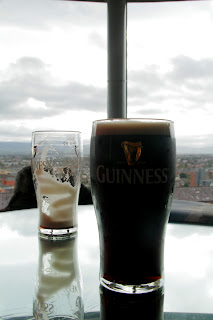Monday, January 30, 2012
Wednesday, January 25, 2012
Monday, January 23, 2012
an artist's statement: depth of field and motion
The lower one’s F-stop, the shallower the depth of field and the smaller the area of focus; the higher one’s F-stop, the deeper the depth of field and the larger the area of focus. While such a statement lends itself well to the technicalities of photography, how I came to view depth of field is this: When one sets their F-stop at a low number, the depth is shallow, yet the eye is more easily directed and able to dissect and embody a very slight area of focus. Not only is the eye more able to rest upon and explore one area, the mind, too, is able to fill the background, the area out of focus with its own substance, its own idea of what it might be had the depth of field been a little deeper. Depth of field allows the eye’s image to be one thing or many things, depending on the artist’s desires. My photographs, all under an F-stop of 5.6, desire one thing, though that one thing may be and often is unknown. The shallow depth of field provides the foundation for that which is unexplored in the rest of the photograph, allowing the viewer, as well as the photographer, to fill the background and/or foreground with his or her own ideas and thoughts. The area in focus may be slight, but it allows the eye to grab hold of something while the mind simultaneously works with the rest, inserting its own identities and pasts into the space left out of focus. The depth of the photograph left unexplored may be so vast, so full of space that it runs from the image and bleeds onto the paper, complicating the boundaries between the photo itself and the paper that contains it.
The lower one’s shutter speed, the blurrier the moving object; the higher one’s shutter speed, the steadier the moving object. Again, while this explains part of the technical idea behind shutter speed and motion, I view such things slightly differently. Motion, whether captured or blurred, is quite literally the moving of things; it is the “things,” or at least the ideas behind them, however, that are malleable. The subject, of course, is the visible thing in motion, but the idea and the substance behind the subject is the invisible thing in motion. While a high shutter speed may allow the capture of a visible subject in motion, the idea behind the subject is given two potential paths. It may too be captured, but it may also still be moving. It is that idea—the idea that though a picture is still, its ideas are not—that strikes me most.
Thursday, January 19, 2012
Friday, January 13, 2012
Wednesday, January 11, 2012
Subscribe to:
Posts (Atom)











